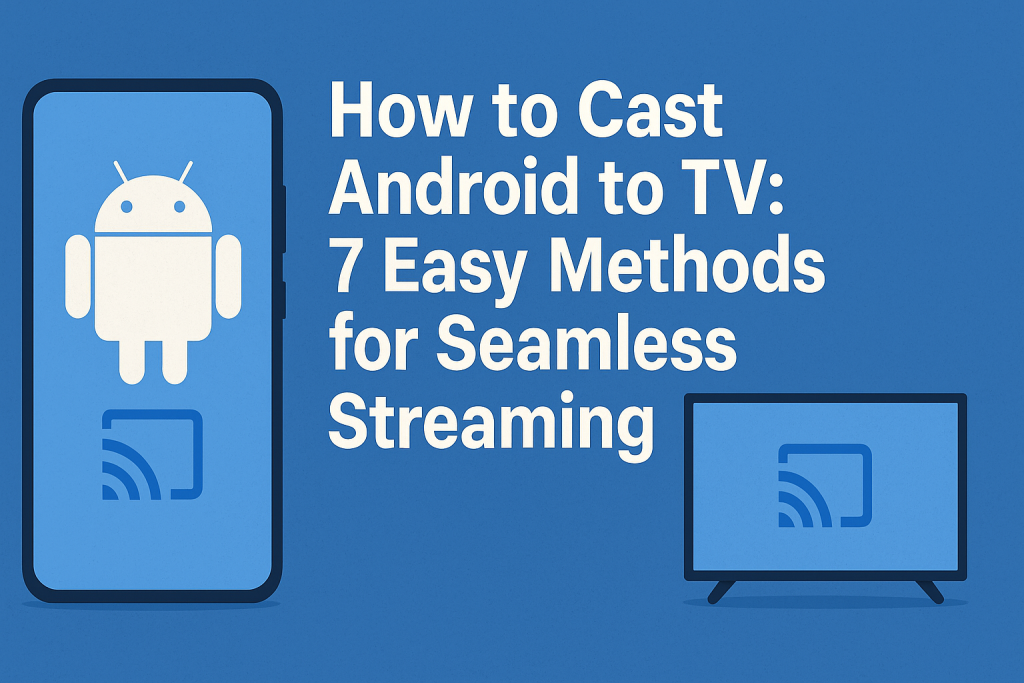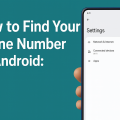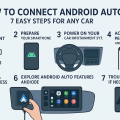Why Cast Your Android Device to Your TV?
The ability to cast your Android phone or tablet to your TV can transform your home entertainment experience. Whether you want to watch movies, view photos, play games, or share presentations, screen mirroring brings your mobile content to the big screen with ease. With so many casting options available, it’s easier than ever to connect your Android device to virtually any TV model—whether it’s a smart TV or a standard HDTV.
In this comprehensive guide, you’ll discover the best methods to cast Android to TV, troubleshooting tips, and answers to common questions. Let’s dive in!
1. Using Chromecast: The Most Popular Casting Solution
Chromecast by Google is one of the most popular and user-friendly ways to cast your Android screen to your TV. Chromecast works with thousands of apps and supports seamless streaming.
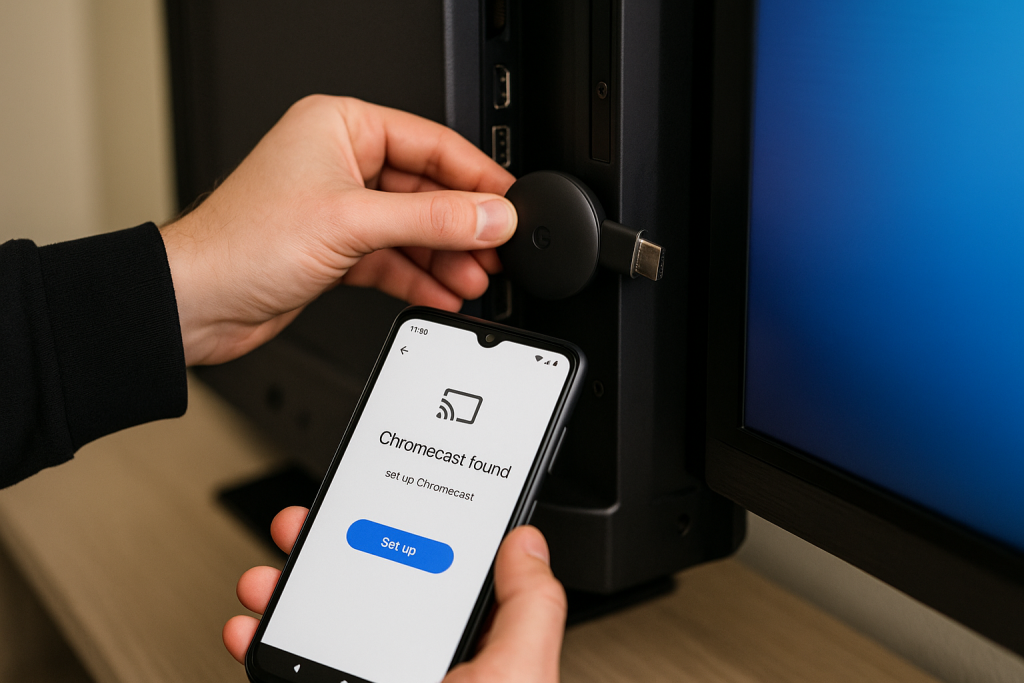
Setting Up Chromecast
Before you can cast, you need to set up your Chromecast device. Here’s how:
- Plug the Chromecast into your TV’s HDMI port.
- Connect the Chromecast to a power source.
- Switch your TV’s input to the correct HDMI port.
- Download and open the Google Home app on your Android device.
- Follow the on-screen instructions to connect Chromecast to your WiFi and pair it with your device.
How to Cast with Chromecast
- Open a supported app (like YouTube, Netflix, or Spotify).
- Tap the Cast icon (usually a rectangle with WiFi bars in the corner).
- Select your Chromecast device from the list.
- Your content will appear on your TV instantly.
For full screen mirroring, open the Google Home app, tap your Chromecast, then tap “Cast my screen”. This mirrors everything on your Android device to the TV.
2. Miracast: Wireless Display for Many Devices
Miracast is a wireless display standard built into many Android devices and smart TVs. It allows you to mirror your screen without additional hardware.
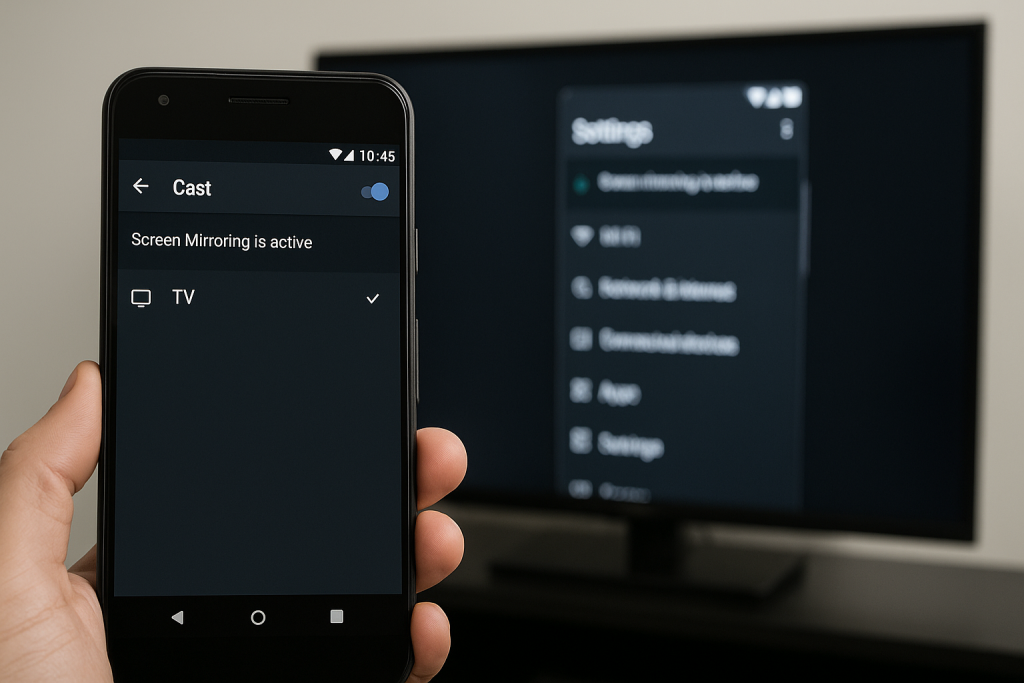
How to Use Miracast
- Ensure both your Android device and TV support Miracast (it may be labeled as “Screen Mirroring” or “Wireless Display” in your TV’s settings).
- On your Android, go to Settings > Connected devices > Cast.
- Select your TV or Miracast receiver from the list.
- Accept the connection on your TV if prompted.
Miracast supports HD video and audio, making it perfect for streaming movies or giving presentations.
3. Smart TV Built-in Features: Casting Without Extra Devices
Many modern smart TVs come with built-in casting and screen mirroring features compatible with Android devices. Look for options like Samsung Smart View, LG Screen Share, Sony Screen Mirroring, or direct Google Cast support.
How to Use Built-in TV Casting
- Connect both your Android and TV to the same WiFi network.
- On your TV, enable the screen mirroring or casting function in the input or network settings.
- On your Android, go to Settings > Connected devices > Cast.
- Select your TV from the available devices.
This method offers a fast and seamless way to project your screen for movies, games, or photo slideshows.
4. HDMI Cable: The Reliable Wired Connection
If you want a lag-free, reliable connection, using an HDMI cable is a great choice—especially for TVs without smart features. Most Android devices can connect via USB-C to HDMI or MHL adapters.
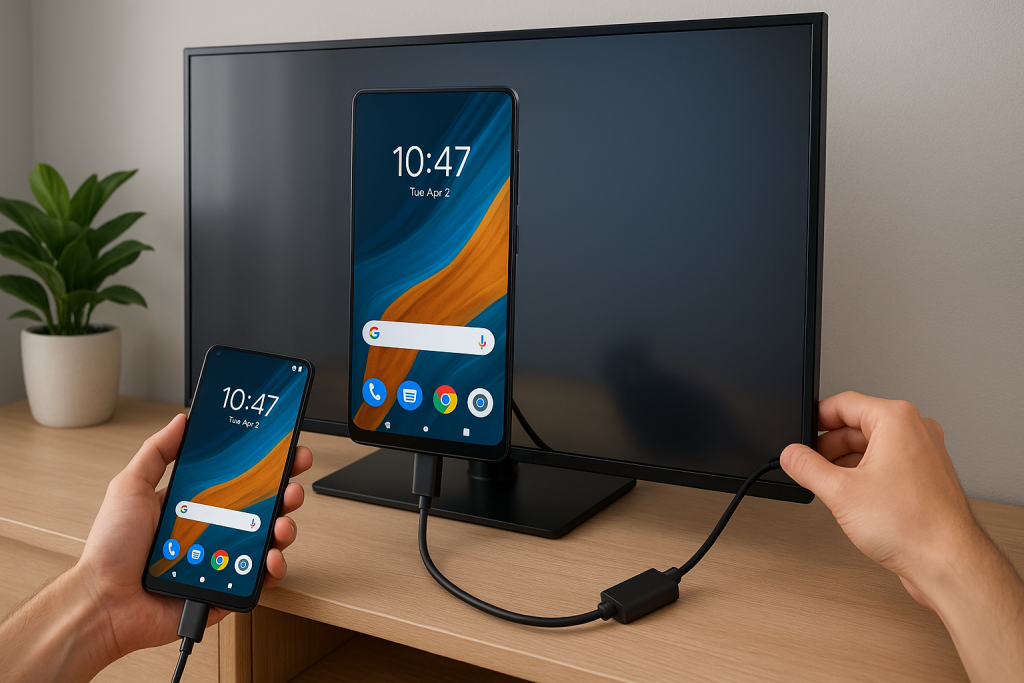
How to Cast with HDMI
- Check if your Android supports HDMI output or MHL (Mobile High-Definition Link).
- Purchase a compatible USB-C to HDMI or MHL adapter if required.
- Connect your Android device to the TV with the adapter and HDMI cable.
- Switch your TV to the correct HDMI input.
Your TV will mirror your Android screen automatically, perfect for lag-free gaming or high-definition video playback.
5. Third-Party Apps: Expanding Your Casting Options
There are several third-party apps available on the Google Play Store that enable screen casting or mirroring to a variety of TVs, even older ones.
Top Recommended Casting Apps
- AllCast: Stream photos, videos, and music to smart TVs, game consoles, and streaming devices.
- LocalCast: Supports casting to Chromecast, DLNA, Fire TV, and more.
- AirScreen: Ideal for casting to devices with Miracast, AirPlay, DLNA, or Google Cast compatibility.
These apps often offer additional features such as subtitle support, playlist management, and file browsing. Always check compatibility and user reviews before installation.
6. Casting to TV via DLNA: Stream Local Media Effortlessly
DLNA (Digital Living Network Alliance) allows Android devices to share media with compatible smart TVs and streaming boxes over a WiFi network. This is ideal for streaming local photos, videos, and music files.
How to Use DLNA for Casting
- Install a DLNA app like Plex or BubbleUPnP on your Android device.
- Connect your TV and device to the same network.
- Select the files you want to play and choose your TV as the target device.
DLNA is excellent for media libraries but does not support full screen mirroring or DRM-protected content like Netflix.
7. Casting Without WiFi: Alternate Methods for Offline Streaming
Sometimes WiFi is not available, but you still want to display your Android’s content on your TV. Here are some solutions:
Offline Casting Options
- HDMI cable: This does not require a network and provides a direct connection.
- WiFi Direct: Some TVs and Android devices support WiFi Direct for device-to-device connections without a router.
- Portable Streaming Devices: Some portable projectors and dongles create their own hotspot for casting.
These methods are great for travel, presentations, or outdoor movie nights where WiFi isn’t accessible.
Comparing Android Casting Methods: Pros and Cons
With so many ways to cast your Android device to your TV, it’s important to pick the best method for your needs. Here’s a quick comparison:
- Chromecast: Easiest, supports most apps, requires WiFi and a Chromecast device.
- Miracast/Smart TV: No extra hardware, may have limited app support, sometimes laggy.
- HDMI: Lag-free, works offline, requires cable/adapter, less convenient for casual use.
- DLNA: Great for media, not for mirroring or streaming DRM content.
- Third-Party Apps: Flexible, but may require learning curve or in-app purchases.
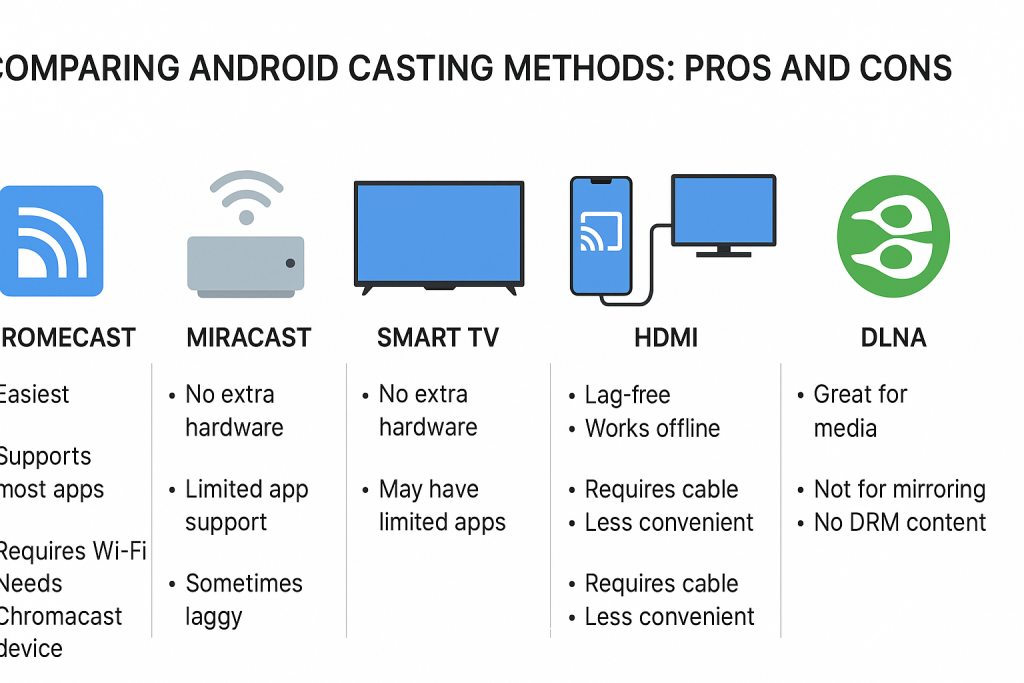
Common Issues and Troubleshooting Tips
Even with the best devices, issues can arise. Here are solutions to the most common casting problems:
No Devices Found
Ensure both your Android device and your TV are on the same WiFi network. Restart both devices and your router if needed. Update apps and device software for maximum compatibility.
Lag or Buffering
Strong WiFi is essential for smooth casting. Move closer to your router, disconnect other devices, or switch to a wired connection (HDMI) for lag-free performance.
No Sound or Black Screen
Check your TV’s volume and input source. If using HDMI, try a different cable. For wireless casting, restart both the TV and your device.
Final Tips for Casting Android to Your TV
Casting your Android device to your TV can greatly enhance how you enjoy digital content. Here are some final tips to ensure a smooth experience:
- Regularly update your Android apps, TV firmware, and casting devices.
- For the best audio and video quality, use a fast WiFi network (preferably 5GHz).
- Explore different casting methods to find what works best for your setup—multiple solutions mean you’re always prepared!
With these 7 easy methods to cast Android to TV, you’ll be able to share your favorite content on the big screen in no time. Happy streaming!
